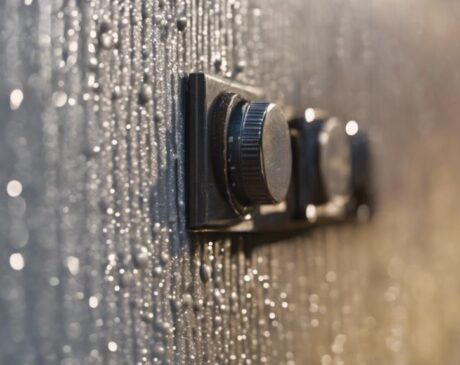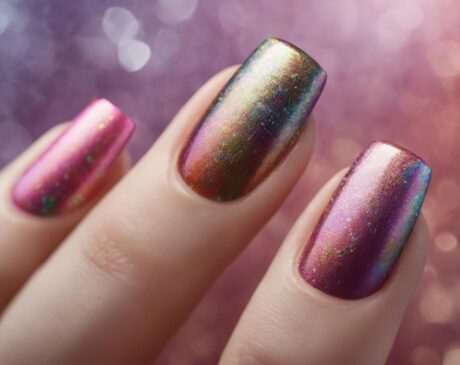Can Kiss Press on Nails Get Wet?
Kiss Press-on nails can get wet, but water weakens the adhesive bond between the nail and natural nail bed, leading to lifting or detachment. To keep nails dry, use gloves for water tasks, limit shower time, and pat nails dry. Applying clear polish or water-resistant glue can help waterproof nails. Avoid mistakes like improper sealing or excessive glue. If nails get water-damaged, soak in warm, soapy water and gently remove. Moisturize after removal. Enhance durability by sealing edges and using appropriate glue. Understanding water's impact is crucial for maintaining press-on nails.
Key Takeaways
- Water exposure weakens adhesive bond on Kiss press-on nails.
- Prolonged water exposure can lead to lifting or detachment.
- Use waterproofing techniques like clear polish or water-resistant glue.
- Avoid water contact to maintain nail durability.
- Remove water-damaged nails gently to minimize harm.
How Water Affects Press-On Nails
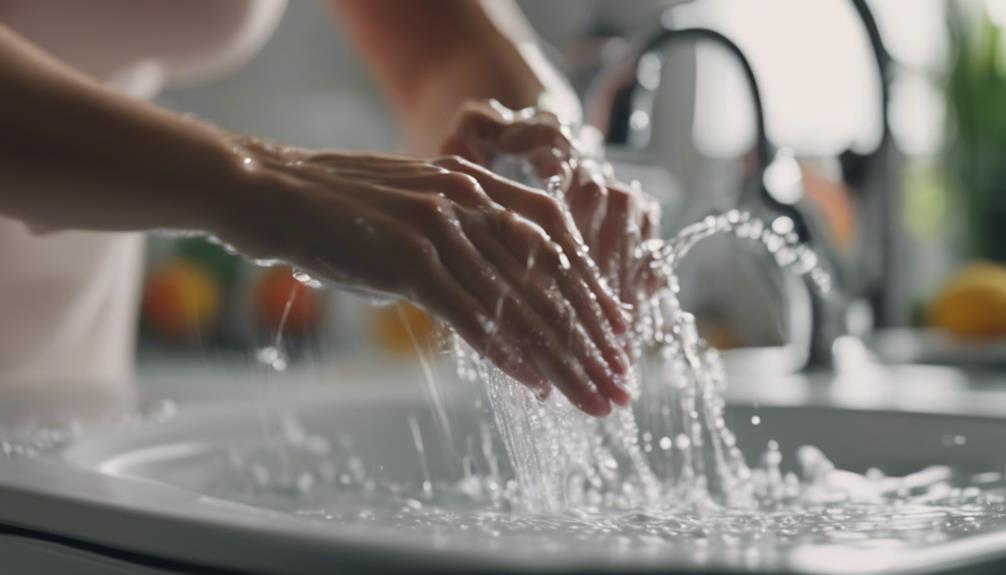
Water exposure can compromise the adhesive bond of press-on nails, leading to potential lifting or detachment. Press-on nails are designed to adhere firmly to the natural nail bed, providing a convenient and quick way to achieve a salon-worthy manicure. However, when exposed to water for prolonged periods, the adhesive backing may weaken, causing the press-on nails to lose their grip and potentially fall off.
The presence of water can soften the adhesive material, making it less effective in maintaining a secure bond between the artificial nail and the natural nail. Factors such as swimming, washing dishes without gloves, or even prolonged showers can contribute to this issue. To mitigate the risk of lifting or detachment due to water exposure, it is essential to take proactive measures to protect the press-on nails.
Innovations in nail technology continue to address these challenges, with manufacturers developing water-resistant adhesives and sealants to enhance the longevity of press-on nails. By staying mindful of water exposure and adopting best practices for nail care, individuals can enjoy the convenience and beauty of press-on nails without compromising their durability.
Tips for Keeping Nails Dry
How can individuals effectively maintain the longevity of their press-on nails by minimizing exposure to moisture? Keeping your nails dry is essential for ensuring the durability of your press-on nails. Here are some innovative tips to help you achieve this goal:
- Use Gloves: When doing household chores or any tasks involving water, wearing gloves can significantly reduce the exposure of your press-on nails to moisture.
- Quick Showers: Try to keep your showers short to prevent prolonged exposure of your nails to water. Additionally, avoid soaking your hands in water for extended periods.
- Pat Dry: After washing your hands or coming into contact with water, make sure to pat your nails dry instead of rubbing them, as rubbing can cause friction and lead to lifting of the nails.
- Avoid Submerging: Refrain from activities that involve submerging your nails in water for long periods, such as swimming or soaking in hot tubs.
Waterproofing Techniques to Try
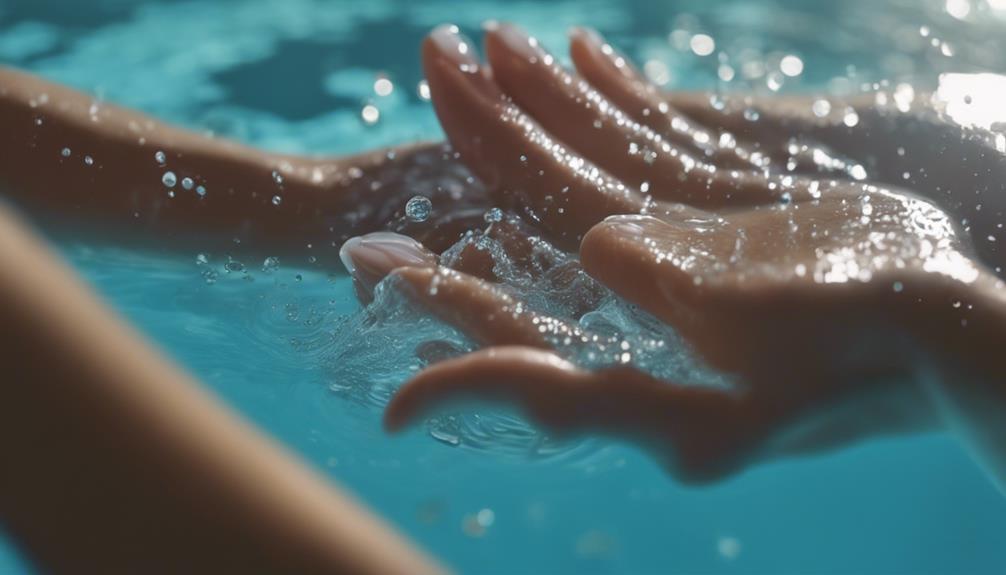
Have you considered employing effective measures to enhance the water resistance of your press-on nails for prolonged wear? Waterproofing your press-on nails can help maintain their integrity and prolong their lifespan. One innovative technique to try is applying a layer of clear nail polish over the press-on nails. This extra barrier can help seal the edges and prevent water from seeping in, increasing the nails' durability.
Another method is using nail glue specifically designed for water-resistant purposes. These specialized glues are formulated to withstand exposure to water, ensuring your press-on nails stay intact even when wet. Additionally, applying a top coat with a waterproof formula can provide an extra layer of protection against moisture, helping your nails stay pristine for longer periods.
Common Mistakes to Avoid
To ensure the effectiveness of your waterproofing techniques for press-on nails, it is important to be mindful of common mistakes that can compromise their water resistance and durability. One common mistake to avoid is applying the press-on nails too close to the cuticle. Placing them right at the edge can create an opening for water to seep in, leading to premature lifting and potential damage. Additionally, failing to properly seal the edges of the press-on nails can leave gaps where water can penetrate, causing them to loosen or come off entirely.
Another mistake to steer clear of is using excessive amounts of glue during the application process. While it may seem like more glue would provide better adhesion, it can actually make the nails more prone to water damage. Excess glue can create a thicker layer that is harder to seal properly, increasing the risk of water seepage. Lastly, avoid exposing your press-on nails to extreme temperatures, as this can weaken the adhesive bond and make them more susceptible to water infiltration. By being aware of these common mistakes and taking the necessary precautions, you can better protect your press-on nails from water damage and ensure their longevity.
Removing Water-Damaged Nails
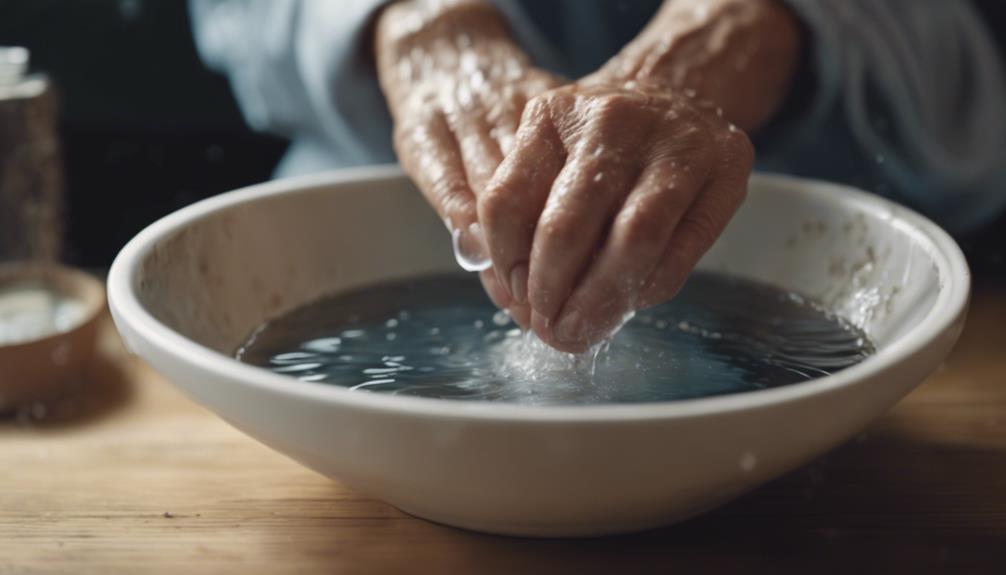
When dealing with water-damaged press-on nails, it is essential to approach their removal with care and precision. Water exposure can weaken the adhesive bond between the nail and your natural nail bed, making removal a delicate task. To effectively remove water-damaged press-on nails, start by soaking your fingertips in warm, soapy water for a few minutes to help loosen the glue. Gently peel off the nails starting from one side and working your way across to minimize damage to your natural nails. If the nails are not easily coming off, avoid forcefully pulling or using excessive pressure, as this can cause harm to your nail bed. Instead, consider using a nail polish remover containing acetone to dissolve the adhesive gently. Remember to moisturize your nails and hands after removal to replenish any lost moisture due to water exposure. By following these careful steps, you can safely remove water-damaged press-on nails without causing further harm.
Frequently Asked Questions
Can Press-On Nails Be Worn While Swimming in a Pool or the Ocean?
Press-on nails can enhance your style effortlessly. However, exposure to water like swimming in a pool or the ocean may weaken the adhesion, causing them to lift or peel. Taking precautions is advisable.
How Long Can Press-On Nails Typically Last When Exposed to Water Frequently?
Press-on nails, when frequently exposed to water, typically have a reduced lifespan due to water weakening the adhesive. The duration can vary but is generally shorter compared to nails not regularly submerged in water.
Are There Specific Types of Press-On Nails That Are More Water-Resistant Than Others?
When exploring water-resistant press-on nails, seek products with innovative adhesive technology that withstands moisture. Consider designs with strong bonding properties and sealants for enhanced durability. Look for brands that prioritize longevity and quality in wet conditions.
Can Press-On Nails Be Safely Worn in Hot Tubs or Saunas?
Press-on nails can add flair to your look, but caution should be exercised in hot tubs or saunas. The heat and moisture can weaken adhesives, leading to premature detachment. Consider waterproof options for extended wear in such environments.
How Can I Prevent Press-On Nails From Lifting or Peeling After Being Exposed to Water?
To prevent press-on nails from lifting or peeling after water exposure, ensure thorough nail prep, use quality adhesive, avoid submerging nails in water for extended periods, and apply a top coat for added protection. Follow these steps for longer-lasting results.

